International Women’s Day, marked on 8th of March is not only about flowers and celebrations, but also about taking a moment to reflect upon the serious existing gender disparities. In 2023, due to unprecedented global crises, progress in bridging the gender gap stagnated. According to the World Economic Forum, it will take another 132 years to close this gap. Many women nowadays face violence, abuse, economic issues, and are victims of stereotypical patriarchal thinking. Every year, new initiatives are drafted but can they actually change the statistics? Check out some of expert opinions below.
Key Takeaways:
- In 2023, the global gender gap score for all 146 countries on the Global Gender Gap Index by Statista.com was 68.4%, showing a 0.3 percentage point improvement from the 2022 edition when it was 68.1%.
- According to the 2023 Global Gender Gap Index, Iceland, Norway, Finland, New Zealand, Sweden, Germany, Nicaragua, Namibia, and Lithuania have closed at least 80% of the gap, while Pakistan, Iran and Afghanistan are at the bottom of both the regional and global ranking tables.
- Women in developing countries face challenges in education, healthcare, economic opportunities, and gender-based violence.
- Experts mention that addressing the gender pay gap should prioritize collaboration through public policies, strengthening the capacities of institutions, and tailoring plans that are based on comprehensive diagnostics.
DevelopmentAid: How can international development initiatives work towards closing the gender pay gap, and what impact would this have on social and economic equality?
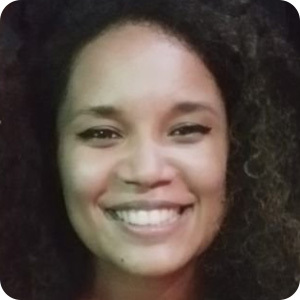
International development initiatives can contribute to closing the gender pay gap by initially ensuring access to data and optimizing the methods for its collection. It is imperative for small, medium, and large companies, as well as governments across all sectors, to measure their progress within their respective markets. To achieve this, collaboration through public policies is essential, integrating minimum measurement standards for both public and private sectors. Strengthening the capacities of public and private institutions regarding the necessity of a gender-focused approach, conducting gender diagnostics, and allocating specific budgets for these endeavors are crucial steps. Mere statements of intent to close the gender gap are inadequate; instead, based on comprehensive diagnostics, tailored plans must be designed according to each country’s unique circumstances. Additionally, maintaining ongoing reviews of educational curricula through collaboration is imperative.
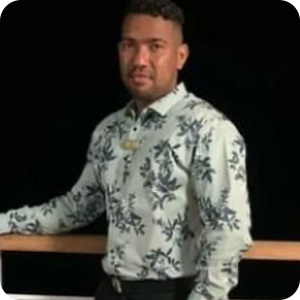
International development initiatives can play a crucial role in closing the gender pay gap. They can promote policies and practices that ensure equal pay for equal work, provide training and educational opportunities for women, and support women’s entrepreneurship and leadership. By addressing the gender pay gap, these initiatives can contribute to social and economic equality by empowering women, reducing poverty, and fostering inclusive economic growth. It’s a win-win for everyone.

“Achieving gender equality to meet the goal of the 2030 Agenda is highly unlikely unless there is a concerted, integrated and holistic approach, greater collaboration among stakeholders, sustained funding and serious policy action to address gender disparities and women’s empowerment worldwide. Although 191 UN Member States agreed to achieve the 2030 Agenda, a small minority of states have included gender equality and women’s empowerment as primary or significant objectives in their international development initiatives. Between 2020 – 2021, it was found that gender equality as a significant objective or as a direct promotion in foreign aid decreased significantly. Despite the international communities’ 2021 pledge to invest $40 billion in gender equality by 2026, donor trends demonstrate that the historic levels of aid funding are being diverted to other crises such as COVID-19 or supporting refugees in donor countries, such as Ukrainians post-Russia invasion. To see a tangible change of gender equality in our lifetimes, women’s needs, challenges and insights must be prioritized, understood, and highly valued in all aspects of humanitarian and development programs. Women represent the majority of the world’s population and without their inclusion, a fair and prosperous society cannot exist.”
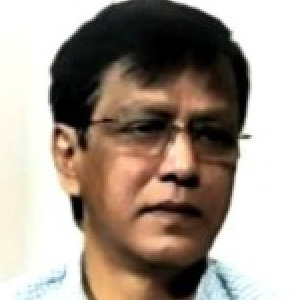
The major gender gaps persist in economic participation opportunities and political empowerment. Globally, women earn only 77 cents for each dollar men earn, and they hold only 24.9% of parliamentary seats. Development communities can assist host countries to develop gender-responsive policies and programs, as well as building women’s capacity to ensure equal pay legislation, salary transparency, and political participation. These initiatives would empower women economically and increase their opportunities for political participation, thereby contributing to reducing gender gaps.
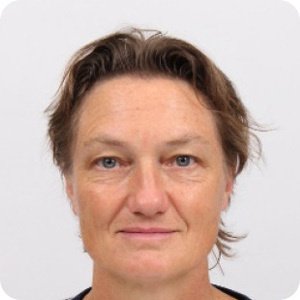
Very few duty-bearers in countries across the world do not acknowledge gender inequality. In fact, most of the 146 countries part of the Global Gender Gap Index have all kinds of gender policies and strategies that aim to reduce the gender gap. But the gap between policy aspirations, plans and the reality remains (too) high. One of the reasons being that I have never heard or seen a ‘head roll’ of a leader or manager (m/f/x!) because of not having achieved the planned gender equality/equity results. Gender justice work is too often an add-on, instead of a starting point at the core of what we do. But also because of the fierce anti-gender-back-push in many countries over the last year(s), directly affecting women, girls and particularly queer communities in terms of violence, discrimination, rights, and opportunities. Women’s Rights and Feminist Organisations, fighting for gender justice, are still extremely under-resourced and often marginalized. I hope for more genuine and practical solidarity, among women and among all communities in all their diversity. United to fight gender gaps, to speak out and work together for gender justice (more than the gender binary) with rigor and results!
DevelopmentAid: In your opinion, how should progress in closing the gender gap be measured, and what indicators are most meaningful to assess success?

In my opinion, progress in closing the gender gap should be measured through a wide range of indicators that reflect both the quantitative and qualitative participation of women, as well as individuals of diverse gender identities, in society. These indicators encompass various aspects, including economic participation and opportunities, access to quality education and employment, representation in decision-making positions, healthcare access and outcomes, financial inclusion and economic empowerment, political participation and leadership roles, gender-based violence and harassment rates, social norms and stereotypes affecting gender roles, work-life balance, caregiving responsibilities, and inclusive policies promoting gender equality. By monitoring these indicators, policymakers and stakeholders can track advances, identify gaps, and implement targeted interventions to achieve meaningful and sustainable progress in closing the gender gap. It’s essential to ensure that these indicators are inclusive and consider the experiences and challenges faced by individuals of all gender identities, promoting equality and representation across all aspects of society.

In my opinion, progress in closing the gender gap should be measured through various indicators. Some meaningful indicators include the gender wage ratio, representation of women in leadership positions, access to education and healthcare, and the overall gender equality index. These indicators provide a comprehensive view of the progress being made and help to assess the success of initiatives aimed at closing the gender gap. It’s important to track these indicators to ensure that we’re moving towards a more equal and inclusive society.

Indicators related to gender parity in education, women’s labor force participation, leadership representation, and gender-based violence rates, among many others, can measure progress. However, a lack of awareness among policymakers on gender issues, cultural norms, and religious barriers are the main challenges to reducing gender gaps.
DevelopmentAid: What are the primary challenges that women in developing countries continue to face, and how can these be effectively addressed?

The consequences of a lack of education, the silent violence of sexual assaults, and obstetric violence continue to afflict women in developing countries, often leading to not only physical but also mental health repercussions, particularly in regions where mental healthcare is not covered by social security. Ensuring that security covers medical and mental health expenses is crucial to address the challenges faced by women in developing countries. It’s essential to have an efficient, interconnected judicial process, with institutions staffed by adequately trained personnel, to improve and unify data collection and tracking, thus preventing the re-victimization of individuals. For instance, a woman or girl should not have to recount the details of a sexual assault multiple times. Moreover, the disproportionate allocation of caregiving responsibilities and household chores often limits women’s ability to earn income from work or pursue other activities essential for personal development and well-being. Therefore, alongside strengthening education on accountability, the state needs to allocate resources and establish care programs that offer options for family members requiring assistance, especially those with medical conditions.

In developing countries, women face various challenges such as limited access to education, healthcare, economic opportunities, and gender-based violence. These challenges can be effectively addressed through targeted interventions. This includes investing in quality education for girls, promoting women’s entrepreneurship and economic empowerment, ensuring access to healthcare services, implementing laws and policies that protect women’s rights, and fostering gender equality in all aspects of society. By addressing these challenges, we can create a more inclusive and equitable world for women in developing countries.
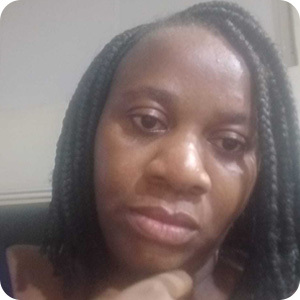
Women in developing countries face persistent obstacles despite efforts made by governments and civil societies. Gender-based violence remains prevalent, including domestic abuse and harmful practices like child marriage and female genital mutilation. A comprehensive approach involving legal frameworks, enforcement, and cultural change is needed to combat this. Limited access to education due to poverty, cultural norms, and inadequate infrastructure prevents girls from attending school. Equal access to education is crucial for empowering women. Similarly, barriers to healthcare, such as provider bias and inadequate policies, hinder women’s access to essential services. Investing in healthcare infrastructure and raising awareness can improve women’s health outcomes. Economic disparities, including unequal pay and limited job opportunities, also affect women. Initiatives like vocational training and financial support for women-owned businesses can promote economic independence. Addressing these challenges requires sustained efforts to empower women and promote gender equality in all aspects of society.

As the 8th of March approaches, it’s an excellent opportunity to reflect on gender-related challenges. Gender remains a controversial subject in many parts of the world, shedding light on problems ranging from genital mutilation, forced marriages and women freely making decisions about their own bodies to sticky floors and glass ceilings. These types of challenges are not easily overcome as they continue to evolve with our changing world. For instance, UNESCO reported that, according to the WEF data, just 22% of AI professionals globally are women, highlighting an old bias in job distribution between women and men. Violence, care work disparities, and unequal access to opportunities are among the many challenges women face daily, representing losses for our societies. The OECD estimates the value of time used on unpaid work, mostly assumed by women, to be approximately 15% of GDP on average across the available OECD countries. Overcoming this disparity would mean more jobs for some and the opportunity to conquer the world for others. Development cooperation serves as a unique ally to identify, analyze, and address both old and new gender-related challenges, as well as share lessons learned and best practices. Leaving no one behind becomes more than a principle, but a determination.
DevelopmentAid: How can international development strategies be more gender-responsive, ensuring equal opportunities for women and girls? Are there specific examples where integrating a gender perspective has led to significant positive impacts on development outcomes?

International development strategies should incorporate a gender-responsive approach to ensure equal opportunities for women and girls. Standardizing and measuring these strategies is crucial to effectively assess their impact across countries. This systematic approach facilitates the evaluation of progress, the identification of areas for improvement, and determination of successful practices. A significant example is the impact of integrating a gender perspective in the financial sector. It’s not just a matter of rights; it also highlights a neglected yet profitable market opportunity. By addressing gender disparities in access to financial services and promoting women’s economic empowerment, development outcomes can be significantly improved. For instance, initiatives such as microfinance programs tailored to women entrepreneurs have led to positive socio-economic impacts, including poverty reduction, improved livelihoods, and increased gender equality. Therefore, integrating gender perspectives into development strategies can yield substantial positive outcomes, fostering inclusive and sustainable development.

International development strategies can become more gender-responsive by integrating a gender perspective throughout the planning, implementation, and evaluation stages. This means recognizing and addressing the specific needs and challenges faced by women and girls, as well as promoting their equal participation and decision-making power. Examples of successful gender-responsive strategies include initiatives that prioritize girls’ education, promote women’s economic empowerment, address gender-based violence, and ensure access to sexual and reproductive health services. These efforts have shown significant positive impacts on development outcomes, leading to improved education rates, reduced poverty, increased gender equality, and enhanced overall well-being. It’s inspiring to see the positive changes that can be achieved when gender is considered in development strategies.

International development initiatives should also focus on influencing the host governments to provide additional resources to reduce gaps. Effective public-NGO partnerships in Bangladesh have helped to reduce gender gaps in the health and economic empowerment sectors, while Rwanda has made significant progress in reducing gender gaps in the agricultural sector through gender integration.
DevelopmentAid: What is your message for women all over the world on International Women Day?

It’s essential to continue discussing gender equality with our families, neighbors, at the supermarket, at work, and even during visits to the gynecologist. We cannot remain silent, and we cannot achieve this without the support of men – our partners, brothers, fathers, uncles, and grandfathers. All of us are part of the solution. Gender inequality affects humanity as a whole because it prevents us from fully developing our lives. A mother who juggles paid work, household chores, childcare, and caregiving for family members often lacks time to rest and fully enjoy life. This exhaustion hinders her from realizing her full potential and makes her more vulnerable to poverty. Moreover, it affects the well-being of her family and children, as they may not receive the attention and care they deserve. Additionally, gender inequality hampers economic growth, as women’s full participation is crucial for thriving economies. In politics, unequal representation limits diverse perspectives and solutions. We must continue discussing and questioning the reasons behind feminicides, high suicide rates among men, and the unequal participation of individuals across various aspects of life. It’s essential to challenge and improve artificial intelligence to ensure that its responses also have a gender perspective. Together, let’s strive for a world where everyone – regardless of gender – can thrive and contribute fully to society.

On International Women’s Day, I want to send a message of empowerment and celebration to women all over the world. You are strong, resilient, and capable of achieving anything you set your mind to. Your voice matters, your dreams matter, and your contributions to society are invaluable. Keep breaking barriers, inspiring others, and making a positive impact. Remember to always believe in yourself and support each other. Happy International Women’s Day!
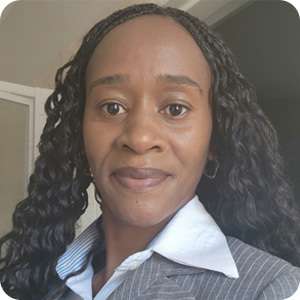
Women have been side-lined for a long time and it is high time that they embrace themselves, stand out and inspire inclusion. We will not be included if we continue to regret and feel sorry for ourselves being women. We should climb the upper echelons of organizations and influence the crafting of gender-sensitive policies. Whatever we venture into should exude meritocracy and not mediocrity. What we need as women is an environment that supports empowerment and leadership development for gender equality, diversity, and inclusivity. It is not only about resource allocation but how much control and access women have to the resources allocated that ensures the inclusion of women. Women, let us get inspired to be included for a better world!
See also: The main issues of gender inequality in developing countries. Part I | Experts’ Opinions
Just the same as men, women play a significant role in the international development sector, addressing global challenges, promoting sustainable development, and reducing poverty. On the DevelopmentAid platform, there are more than 8,000 job opportunities in the international development sector of which more than 200 are related to the Gender Sector. With an Individual Professional Membership, experts can access all these openings and carefully read their descriptions, and find out more about the proposed salaries. They can also unlock the doors to open tenders and grants for individuals, organizations’ contact information, donors’ details, and many more.


